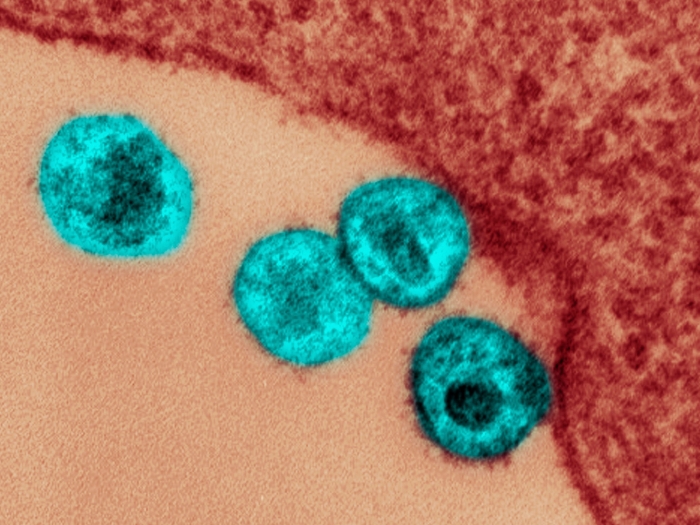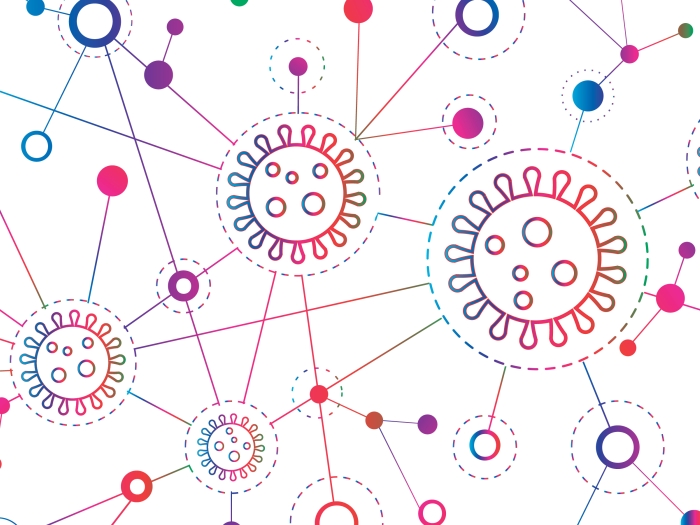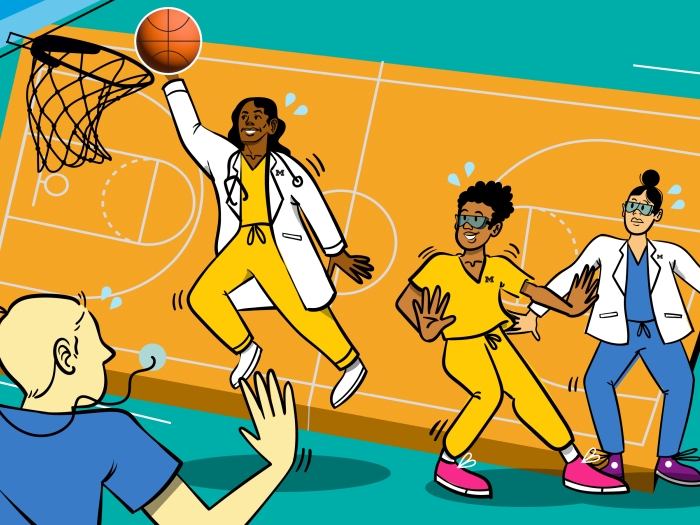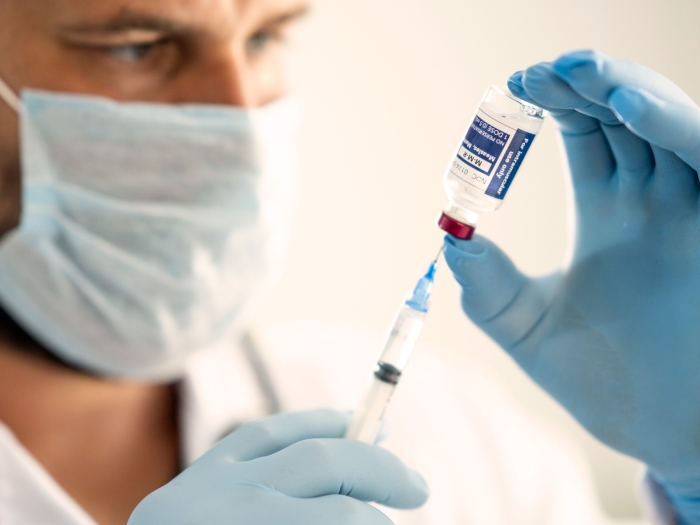A conversation with Dr. Daniel Kaul, Director of the Transplant Infectious Disease Service at University of Michigan Health
Transcript
Host (00:02):
Welcome to the Michigan Medicine News Break, your destination for news and stories about the future of healthcare. Today, we are talking to Dr. Daniel Kaul, the Director of the Transplant Infectious Disease Service at University of Michigan Health, about a worrisome development that his team had to deal with in the fall of 2020, which was the first documented COVID-19 infection acquired through a transplant. So, welcome, Dr. Kaul.
Dr. Daniel Kaul (00:26):
Thanks for having me.
Host (00:27):
And I'm wondering first, if you can paint the picture for us about what the transplant landscape and healthcare at large was really like in the fall of 2020, and what concerns if any, that you had at the time?
Dr. Daniel Kaul (00:38):
Sure. Yeah, I mean, initially we had a period where we were somewhat limited in how many transplants we could do, largely because of resource limitations related to COVID-19 and ICU beds and various equipment that was required in the post-transplant setting, but just wasn't available because it was needed for critically ill COVID patients. That resolved after a period of time, as we got our feet adjusted about how we would be taking care of critically ill COVID patients. And by the time this event had occurred, the issues of whether COVID could be transmitted were still being worked out.
Host (01:17):
Was this something that you had considered or anticipated?
Dr. Daniel Kaul (01:20):
Yeah, it was something everybody was worried about. You may recall early in the pandemic, there weren't even sufficient tests available to test donors or potential deceased donors, or living donors, for that matter. By the time this occurred, which was in the fall of 2020, testing capacity wasn't an issue and all donors were getting tested with the nasopharyngeal swab. So, that made us feel a little bit more comfortable. We also felt a little bit more comfortable in that there had not been any proven transmissions at that point, even though the pandemic was eight, nine months old.
Host (01:54):
So then, you had been confident about a few more of these things, given the testing, how then did the patient actually develop COVID-19 through this transplant?
Dr. Daniel Kaul (02:04):
Yeah, so the donor for this patient tested negative for COVID in a nasopharyngeal swab. So, that's the swab I think most people are familiar with, where the nose is swabbed. And so, it was good to see that that was negative. We also knew that there weren't any symptoms or other suggestions on, for example, the x-rays and other imaging studies that been done on this donor, that would in any way suggest that the donor had COVID-19. So, that was all looking fine.
Dr. Daniel Kaul (02:35):
But what happened was, our recipient initially did just fine, but a couple of days after transplant got quite ill and nobody was sure why. And we did another COVID test on that recipient from fluid that was from deep down in the lungs, and that fluid was positive, even though a nasopharyngeal swab, so a specimen from up higher in the respiratory tract, was negative. And that gave us some concern, could this have come from the donor?
Host (03:07):
So, then how did you find out for certain that the recipient had acquired COVID from the donor in the transplant?
Dr. Daniel Kaul (03:13):
So, what happened is after we found out that the recipient had infection deep in her lungs, but not in her upper tract, that made us concerned, could this have come from the donor? Especially because the recipient had tested negative just prior to the transplant, because we check everybody when they come in the hospital. And so, we just happened to have had a specimen from deep down in the donor's lungs that we had brought for other purposes. And even though it really wasn't a standard thing to do or completely validated in our microbiology lab, we tested that for COVID and that specimen from the donor deep down in the lungs tested positive.
Dr. Daniel Kaul (03:51):
What also occurred was the surgeon who'd done the operation actually came down with COVID. So, Adam Lauring, one of my colleagues, who's a virologist, quickly sequenced all of those specimens of COVID. So, from the donor, from the recipient and from the surgeon, and showed that they were all essentially exactly the same. And so, that proved that the infection had come to the recipient from the donor.
Host (04:15):
What was the reaction from your team at that point?
Dr. Daniel Kaul (04:19):
Well, obviously we were really upset. We do organ transplantation to try and save people's lives, but we recognize that there's always a balance here and that there's always the potential for something to be transmitted from the donor to the recipient. You can't test for everything, it's just not feasible in the timeframe that's available for deceased donor organ procurement.
Dr. Daniel Kaul (04:44):
But obviously, we were upset and our first thought was, "Okay, well what can we do to help treat the recipient and lessen the impact of this transmission? Because they're at such a vulnerable point, they just had a lung transplant, they're heavily immunosuppressed." And also we thought, "What kind of changes might be required in the way donors are tested to make the organ supply as safe as possible?"
Host (05:09):
What did you do next to try to ensure that this wouldn't happen again, then?
Dr. Daniel Kaul (05:14):
The first thing we wanted to do was to publicize this, even though maybe it could create some concern about safety of organ transplantation, maybe it could create some concern we were doing everything properly in terms of testing donors. And to review our processes in that regard to make sure we were doing everything. And in fact, we were doing everything that was required and at that time, less than one out of three organ donors for lungs had a deep specimen in the lungs tested. And we have no control over that process. And we really felt that we didn't want to take any more lungs and we didn't think any lung should be transplanted unless a deep specimen was tested.
Dr. Daniel Kaul (05:53):
We also recognized that the only way to accomplish that was one, to publicize this, and then two, to advocate for changes in the policy nationally to require that testing be done, because that's really the only way to ensure uniformity. So, at the national level, there's an organization called UNOS, United Network for Organ Sharing, which sets up something called the OPTN, which is the Organ Procurement and Transplantation Network, that you have to participate in and follow the rules of, if you're going to do deceased donor organ transplantation in the United States.
Dr. Daniel Kaul (06:26):
So, we contacted people we knew in that organization, many people at Michigan had been part of committees and part of the volunteer structure within the OPTN, and really just advocated to get this testing done universally. And in fact, in my experience, which is relatively long with the OPTN, they don't tend to work real quickly, because they're a methodical organization and generally should be a methodical organization. But in this instance, it quickly became apparent to them that they needed to make this new rule, that this wasn't going to be tested voluntarily on all lung organ donors. And they did change the policy. And that made us much more comfortable that we were making the organ supply as safe as we could for both our recipients and recipients elsewhere.
Host (07:14):
And are those kinds of policy changes pretty standard? Did it move at a quicker pace than normal?
Dr. Daniel Kaul (07:22):
I think generally, policy changes like that take a couple of years, because they usually aren't urgent and they require participation from experts in testing, from those who run what are called organ procurement organizations, which are essentially businesses that do the process of organ procurement, at least from arranging and donor testing and that sort of thing.
Dr. Daniel Kaul (07:46):
And so, there are a lot of players in this and everybody's got to be on the same page. You can't just make policy and change it every few months. You have to put it together in a methodical way. So normally, it takes quite a long time to do that and there's a whole process and a public comment period, but in this case, there wasn't time for that. And the OPTN, with some urging, recognized that and made a policy change much more quickly than I had seen for this type of situation previously.
Host (08:18):
What kind of media attention did you get from publicizing this in these various ways?
Dr. Daniel Kaul (08:23):
We got a lot of attention. So, this is the kind of event that does draw national media attention and often presented in a way that I think can mislead people and make people really scared about participating, either as potential donors or as recipients in organ transplantation. So, we wanted to make sure that we've participated in that, so that we could explain the story that in general, the organ supply was very safe and the risk of having organ failure and not proceeding with transplantation, because you're worried about a very rare event, is almost never going to be in the best medical interests of someone with organ failure.
Dr. Daniel Kaul (09:03):
But we did get a lot of national media attention and I think generally, they were willing to listen and understood that policies needed to change and they actually, in a way, maybe help get those policies to change.
Host (09:16):
What is your proudest takeaway from this situation?
Dr. Daniel Kaul (09:18):
Well, I just think that this is something that can reflect badly if presented in the wrong way, on the university, because the short story is, someone got COVID from a donor at the University of Michigan, and one could interpret that as something that should never happen. But like with most things, it's much more complicated than that and all the appropriate procedures were followed and it was a surprise.
Dr. Daniel Kaul (09:47):
And so, I think that the university and the people who run the transplant center, Dr. Sonnenday, who's our transplant center director, and Dr. Magee, who was involved in the leadership at that time, really the whole structure at Michigan Medicine, no one ever suggested that, "Hey, maybe it was best not to publicize this." And in fact, were very encouraging of doing so, and that's not true in every organization. I do know that after this, there were places where this occurred and they reported it in the way they had to report it, but they weren't particularly interested in publicizing it in another way.
Dr. Daniel Kaul (10:19):
So, I think that speaks well to the ethics and integrity of our leadership. So, I personally was very pleased to see that. And I think that's my proudest part of this. And also, just getting the policy changed elsewhere. It's a rapidly evolving situation with COVID, particularly back then, and how to do organ transplantation in the setting of a pandemic was something that no one had any experience with. And I think being part of making that system safer is something that all of us at Michigan Medicine can be proud of.
Host (10:49):
Has this experience changed the way you would approach future care?
Dr. Daniel Kaul (10:53):
Yeah. I think that it made all of us much more comfortable proceeding with lung donors who had negative tests from the lower respiratory tree, as well as the upper. And there was a period of time while that policy was being implemented, when we would only accept organs from those who had had those tests done, which was really a minority of the organs that were available.
Dr. Daniel Kaul (11:19):
And again, I think that our general principles at Michigan Medicine around reporting things when they don't go the way that we want to, trying not to blame individuals, but thinking about the system and how to improve the system, that has not, again, always been what's happened nationally when there have been mistakes related to donor derived infection, or not really mistakes, but when donor derived infection has occurred, there have often been punitive measures put in that I've seen elsewhere. And I think our culture remains a good one and it encourages me to report things when they don't go the way that we'd want to, to try and improve things for the future.
Host (12:00):
You've received an award actually, for the paper around this case. Is that correct? Can you talk a little about that?
Dr. Daniel Kaul (12:08):
Sure. So, this was from the American Journal of Transplantation as just the top clinical paper of the year. And I think that they were recognizing one, that is a difficult thing to report, so I think they were recognizing the commitment to do that. And also, the fact that it did change the way organs were screened and created more confidence, both for patients and throughout the system, that lung organs in particular, weren't going to bring COVID along with them.
Host (12:39):
And what does receiving this type of award tell you or do for you and your team?
Dr. Daniel Kaul (12:44):
Well, I think it's just affirmation from a national organization that they recognize that again, being open, reporting things when they occur, is really the only way we can provide the highest level of care and keep things as safe as possible for something that we have to recognize is very, very complex to take an organ out of one person and put it into another, is a really complex and difficult thing, and there are always going to be outcomes that we don't want, but we just have to keep working hard to make it as safe as possible.
Host (13:20):
That's great. Well, thank you so much for being here, Dr. Kaul. I wish you continued luck with transplants as the pandemic wears on. So, thank you so much.
Dr. Daniel Kaul (13:29):
Thank you.
Host (13:30):
For more stories like this one, visit www.uofmhealth.org/healthblogs, or search for the Michigan Medicine News Break, anywhere you listen to podcasts.

Listen to more Health Lab podcasts - a part of the Michigan Medicine Podcast Network.





